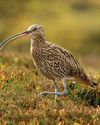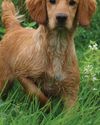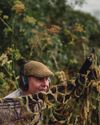With proposals put forward to reintroduce the Eurasian lynx to the UK, Liam Stokes looks at the impact they would have on our countryside

Kielder Forest in Northumberland is the proposed launch pad for the UK reintroduction of the Eurasian lynx, a species last seen in this country 1,400 years ago. Battle lines have been drawn over whether this is a good idea or not, and it gets pretty heated.
One side claims that 90 per cent of local residents support the reintroduction, while the other claims 90 per cent of residents oppose it. That’s quite a big sampling error. In a report on this apparent discrepancy, the Guardian attempted to interview locals in February of this year, only to find that many weren’t willing to publicly nail their colours to the mast for fear of offending friends and family on the other side.
The national debate is similarly polarised, which is probably due at least in part to the way in which the issue is reported. My favourite piece of wildly hyperbolic reporting, in the Daily Express, described the proposed reintroduction as, “Plans to let bloodthirsty wild lynx the size of small lions lurk, ready to pounce…”
But what if it did happen? How would we manage the population? This isn’t as daft a question as it sounds. The 14 lynx introduced into Germany in 2000 have now produced a population of around 100, so there is precedent for small reintroductions rapidly growing to a large number of individuals. This potential for expansion raises the spectre of conflict with other land users, generating most of the controversy around the proposed reintroduction.
There are questions to be asked around conservation priorities and the impact lynx might have on other species of conservation concern, but the overwhelming majority of the resistance to the reintroduction comes from those who are worried that their sheep are going to get munched by a big cat.
Denne historien er fra September 6,2017-utgaven av Shooting Times & Country.
Start din 7-dagers gratis prøveperiode på Magzter GOLD for å få tilgang til tusenvis av utvalgte premiumhistorier og 9000+ magasiner og aviser.
Allerede abonnent ? Logg på
Denne historien er fra September 6,2017-utgaven av Shooting Times & Country.
Start din 7-dagers gratis prøveperiode på Magzter GOLD for å få tilgang til tusenvis av utvalgte premiumhistorier og 9000+ magasiner og aviser.
Allerede abonnent? Logg på

United we stand
Following United Utilities' decision to end grouse shooting on its land, Lindsay Waddell asks what will happen if we ignore our vital moors

Serious matters
An old gamebook prompts a contemplation on punt-gunning

They're not always as easy as they seem
While coneys of the furry variety don't pose a problem for Blue Zulu, he's left frustrated once again by bolting bunnies of the clay sort

Debutant gundogs
There's lots to think about when it comes to making the decision about when to introduce your dog to shooting

When the going gets rough
Al Gabriel returns to the West London Shooting School to brush up on his rough shooting technique

The Field Guide To British Deer - BDS 60th Anniversary Edition
In this excerpt from the 60th anniversary edition of the BDS's Field Guide To British Deer, Charles Smith-Jones considers the noise they make

A step too far?
Simon Garnham wonders whether a new dog, a new gun and two different fields in need of protection might have been asking too much for one afternoon's work

Two bucks before breakfast
A journey from old South London to rural Hertfordshire to stalk muntjac suggests that the two aren't as far detached as they might seem

Stalking Diary
Stalkers can be a sentimental bunch, and they often carry a huge attachment to their hill

Gamekeeper
Alan Edwards believes unique, private experiences can help keepers become more competent and passionate custodians of the countryside